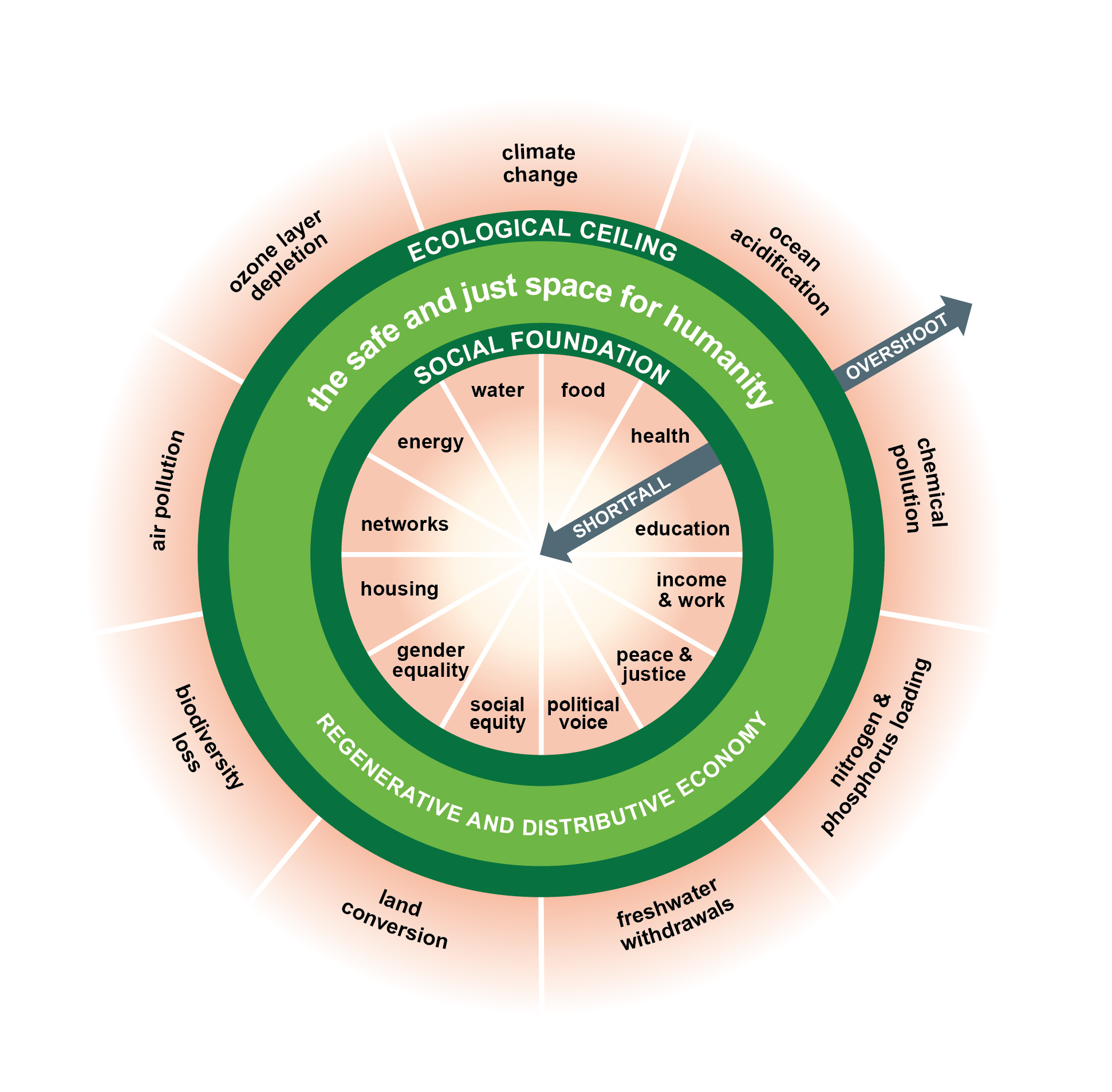Doughnut Economics
A : [[book]]
Written by : [[Kate Raworth]]
I like the book. Combines alternative economics, systems thinking, care, feminism, environmentalism, some socialist ideas.
I very much like the idea of a regenerative and distributive economy. Not sure if she'd describe it as such, but it comes across fairly [[ecosocialist]], with its dual concern for [[social equity]] and [[planetary boundaries]]. Though not explicitly anti-capitalist, it's anti neoliberal economics.
The Doughnut
I like how easily graspable as a visual rubric it is - don't let anyone go into the hole of the doughnut, i.e. have a baseline of equity for everyone, and don't go outside the outer edge - i.e. stay within planetary boundaries.
The bit in the middle, the doughnut, is a regenerative and distributive economy.
)Ecological ceiling
- [[Climate change]]
- Ocean acidification
- Chemical pollution
- Nitrogen & phosphorous loading
- Freshwater withdrawals
- Land conversion
- [[Biodiversity loss]]
- Air pollution
- Ozone layer depletion
i.e. the [[planetary boundaries]].
Social foundation
- Water
- Food
- Health
- Education
- Income & work
- Peace & justice
- Political voice
- Social equity
- Gender equality
- Housing
- Networks
- Energy
I like the seven ways to think like a 21st century economist:
- Change the Goal: Shift from GDP growth to thriving within the Doughnut's ecological and social boundaries
- See the Big Picture: Recognize that economies are embedded within society and the environment.
- Nurture Human Nature: Promote cooperative and caring behaviors over competitive ones.
- Get Savvy with Systems: Understand economies as complex, interdependent systems.
- Design to Distribute: Create distributive economies that address inequality.
- Create to Regenerate: Transition from degenerative to regenerative economic practices.
- Be Agnostic about Growth: Focus on thriving rather than perpetual growth.
- public document at doc.anagora.org/doughnut-economics
- video call at meet.jit.si/doughnut-economics

.jpg)